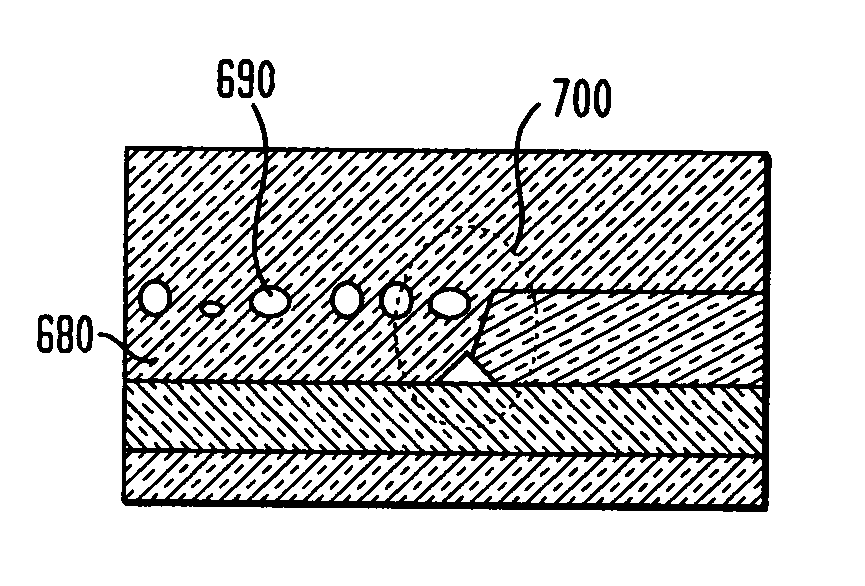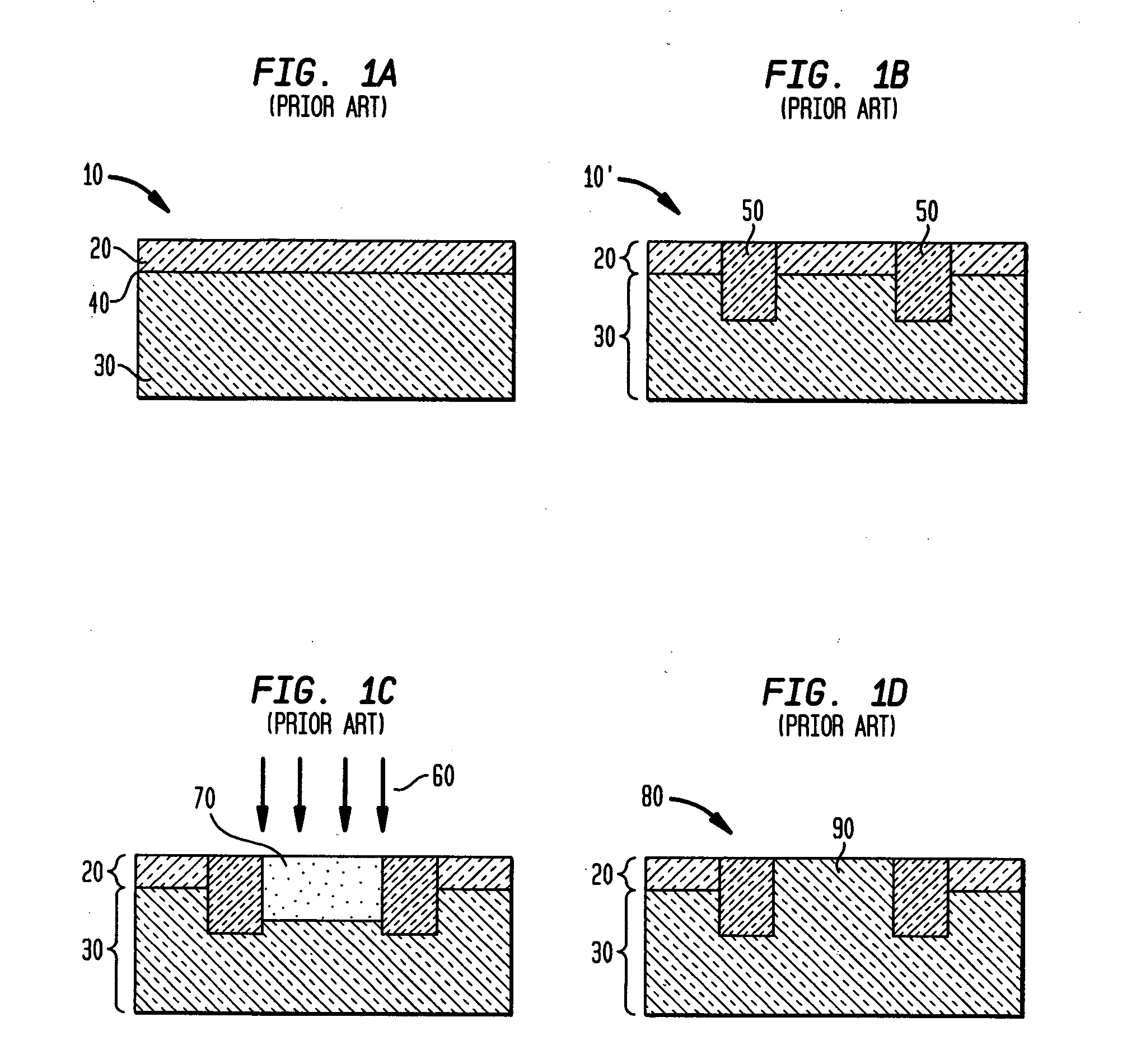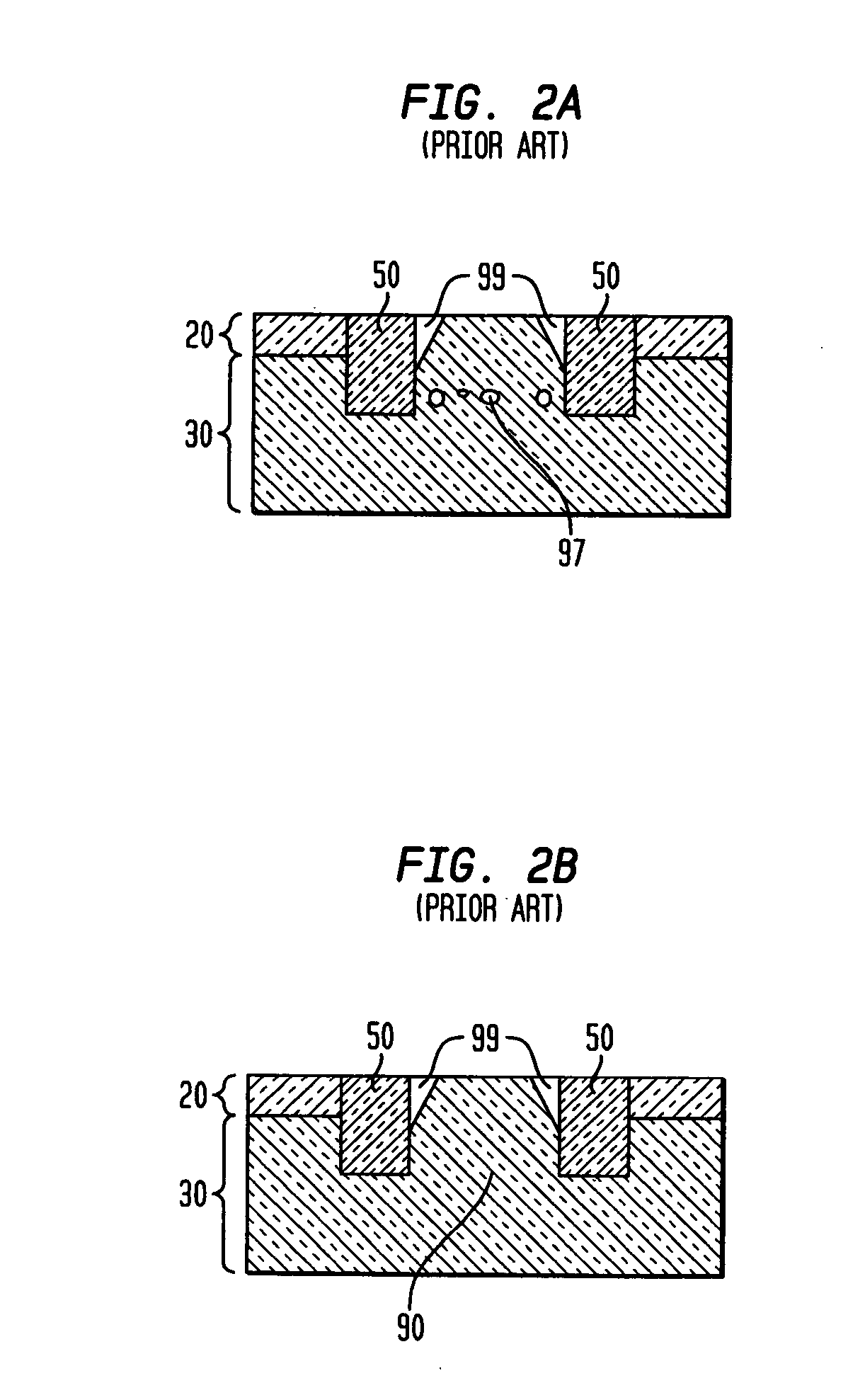Amorphization/templated recrystallization method for hybrid orientation substrates
- Summary
- Abstract
- Description
- Claims
- Application Information
AI Technical Summary
Benefits of technology
Problems solved by technology
Method used
Image
Examples
Embodiment Construction
[0035] The present invention will now be described in more detail by referring to the drawings that accompany the present application. In the accompanying drawings, like and corresponding elements are referred to by like reference numerals. It is also noted that the drawings of the present invention representing the structures during the various processing steps of the present invention are provided for illustrative purposes and are thus not drawn to scale.
[0036] Reference is first made to FIGS. 6A-6E which are pictorial representations (through cross sectional views) illustrating the steps of a preferred embodiment of the inventive method for forming a low-defect density hybrid orientation substrate, i.e., a hybrid orientation substrate with no corner defects and a low (7 / cm2) concentration of residual end-of-range defects. FIG. 6A shows a starting substrate 200 comprising an upper silicon layer 220 having a first crystal orientation, a lower silicon layer or substrate 230 having ...
PUM
 Login to View More
Login to View More Abstract
Description
Claims
Application Information
 Login to View More
Login to View More - R&D
- Intellectual Property
- Life Sciences
- Materials
- Tech Scout
- Unparalleled Data Quality
- Higher Quality Content
- 60% Fewer Hallucinations
Browse by: Latest US Patents, China's latest patents, Technical Efficacy Thesaurus, Application Domain, Technology Topic, Popular Technical Reports.
© 2025 PatSnap. All rights reserved.Legal|Privacy policy|Modern Slavery Act Transparency Statement|Sitemap|About US| Contact US: help@patsnap.com



